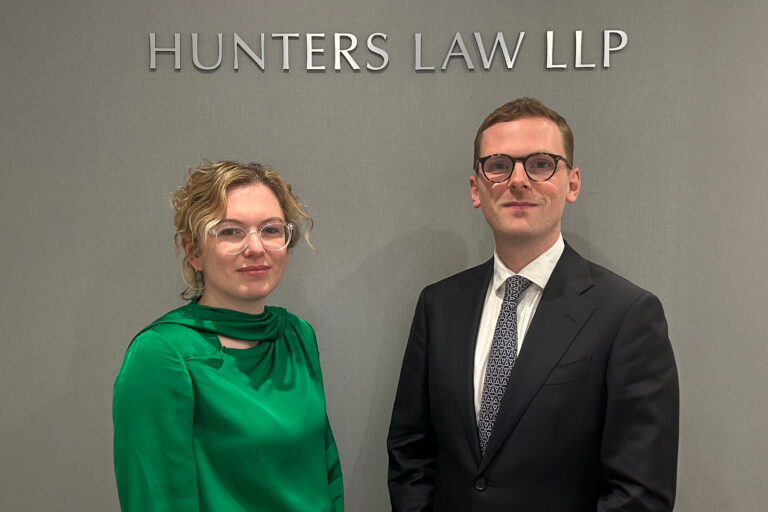Henry Hood examines the case of WX v HX [2021] EWHC 241 and divorce settlements in EPrivateClient
![Henry Hood examines the case of WX v HX [2021] EWHC 241 and divorce settlements in EPrivateClient](https://www.hunterslaw.com/wp-content/uploads/2024/02/Lincolns-Inn-arch-22-1024x341.jpg)
This article was originally published in EPrivateClient and can be accessed here.
How divorce settlements can be influenced by personal asset management during a marriage
A recent High Court decision has highlighted that how assets are managed and utilised during a marriage can influence their treatment on divorce.
WX v HX [2021] EWHC 241 concerned a couple divorcing after 33 years of marriage; the husband was a banker and the wife a homemaker. Their combined assets totalled £55m, mostly deriving from the husband’s career but including £14m originating from the wife’s family.
During the marriage, the husband used his income to meet the family’s outgoings and purchase their assets. The wife’s family assets were kept separate, and though the wife used income they produced to meet some outgoings, the capital remained untouched.
The husband argued that all the assets should be shared equally. The wife argued that she should retain her family assets and the remaining assets should be shared equally. The wife largely succeeded, meaning that she exited the marriage with significantly more than half of the parties’ assets, an outcome the husband considered unfair.
The outcome reflects the law’s distinction between two classes of assets:
- matrimonial assets, deriving from the parties’ endeavours during the marriage, such as income they have earned, or the value of a business they have developed; and
- non-matrimonial assets, deriving from a source outside the marriage, including assets received by gift or inheritance, or generated by one party pre-marriage or post-separation.
The starting point on divorce is that matrimonial assets are shared equally, and non-matrimonial assets are retained by the spouse who brought them to the marriage. This can be departed from for a number of reasons, including where required to meet the parties’ needs. Additionally, non-matrimonial assets may be shared where they have been mingled with matrimonial assets.
Plainly, the funds generated by the husband’s banking career during the marriage were matrimonial; debate focused on the parties’ claims in respect of non-matrimonial assets.
The husband argued that he had brought $10m into the marriage, a combination of inheritance and accumulated pre-marital income. However, because he had not kept these assets separate, but used them to support the family during the marriage, they had been mingled and lost their non-matrimonial character. By contrast, £1.7m which the husband had inherited towards the end of the marriage and kept separate was non-matrimonial.
Although the wife’s family assets had been kept separate, the husband argued that they had become matrimonial through his management of them for the wife, including negotiating their exit from a family trust company and relocation into a tax-efficient offshore structure. His argument failed; he had not shown that the wife had, through words or actions, manifested an acceptance that the assets should be treated as matrimonial. Rather, the wife had kept these assets wholly separate – they were outside the financial arrangements put in place to manage the family’s domestic economy.
The wife therefore emerged from the marriage significantly wealthier than the husband. The husband’s barrister had described the outcome sought by the wife as grotesque: the husband’s successful career, and willingness to use the significant income it generated as well as his pre-marital assets to benefit of the family, had enabled the wife to keep her family assets separate, retaining their non-matrimonial character. Yet the outcome was plainly in accordance with the established law.
It seems likely that during the marriage neither party appreciated the potential future significance of their decisions in this regard. Considering how assets may be treated on divorce prior to or during a marriage may seem unromantic, but it can avoid unpleasant surprises or unintended consequences, and allow couples to take this into account in their financial planning.
Those preferring to circumvent the court’s approach to the division of assets on divorce should consider a nuptial agreement setting out how they wish their assets to be treated in the event of divorce: such an agreement can be entered into before or during a marriage and will generally be upheld where the parties have entered into it freely and with a full appreciation of its implications, so long as it meets the parties’ needs.
Whichever approach is taken, factoring in the possible implications of a future divorce allows for comprehensive financial planning and can assist both parties in understanding their potential financial future.





